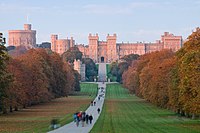ファイル:Triptych (1305-08); Duccio di Buoninsegna.jpg

元のファイル (1,093 × 779 ピクセル、ファイルサイズ: 186キロバイト、MIME タイプ: image/jpeg)
ウィキメディア・コモンズのファイルページにある説明を、以下に表示します。
|
| ドゥッチョ・ディ・ブオニンセーニャ: English: Triptych
( |
|||||||||||||||||||||
|---|---|---|---|---|---|---|---|---|---|---|---|---|---|---|---|---|---|---|---|---|---|
| 作者 | |||||||||||||||||||||
| タイトル |
English: Triptych |
||||||||||||||||||||
| 分野 |
絵画作品 object_type QS:P31,Q3305213 |
||||||||||||||||||||
| 日付 |
1305年と1308年の間 date QS:P571,+1305-00-00T00:00:00Z/8,P1319,+1305-00-00T00:00:00Z/9,P1326,+1308-00-00T00:00:00Z/9 |
||||||||||||||||||||
| 技法 |
パネル medium QS:P186,Q106857709 |
||||||||||||||||||||
| 寸法 |
高さ: 44.9 cm;幅: 31.4 cm dimensions QS:P2048,44.9U174728 dimensions QS:P2049,31.4U174728 (centre) |
||||||||||||||||||||
| 所蔵者 |
institution QS:P195,Q1459037 |
||||||||||||||||||||
| 情報源/撮影者 |
ウェブ・ギャラリー・オヴ・アート: reference_wga QS:P973,"http://www.wga.hu/html/d/duccio/8windsor.html" |
||||||||||||||||||||
| 許可 (ファイルの再利用) |
|
||||||||||||||||||||
キャプション
このファイルに描写されている項目
題材
image/jpeg
190,399 バイト
779 ピクセル
1,093 ピクセル
82942fb823b0c52d456b810b9e33c3c293b6be43
ファイルの履歴
過去の版のファイルを表示するには、その版の日時をクリックしてください。
| 日付と時刻 | サムネイル | 寸法 | 利用者 | コメント | |
|---|---|---|---|---|---|
| 現在の版 | 2007年2月25日 (日) 22:10 |  | 1,093 × 779 (186キロバイト) | M.chohan | Triptych (1305-08); Duccio di Buoninsegna.jpg {{PD-Art}} |
ファイルの使用状況
以下のページがこのファイルを使用しています:
グローバルなファイル使用状況
以下に挙げる他のウィキがこの画像を使っています:
- hy.wikipedia.org での使用状況
- id.wikipedia.org での使用状況
- mk.wikipedia.org での使用状況
- pt.wikipedia.org での使用状況
- sl.wikipedia.org での使用状況
- uk.wikipedia.org での使用状況
メタデータ
このファイルには、追加情報があります (おそらく、作成やデジタル化する際に使用したデジタルカメラやスキャナーが追加したものです)。
このファイルが元の状態から変更されている場合、修正されたファイルを完全に反映していない項目がある場合があります。
| JPEGファイルのコメント | DUCCIO di Buoninsegna
(b. ca. 1255, Siena, d. 1319, Siena) Triptych 1305-08 Panel, 44,9 x 31,4 cm (centre); 44,8 x 16,9 cm (each wing) Royal Collection, Windsor The painting is a portable triptych of a type that was fairly widely produced in Italy during the early fourteenth century, essentially for private worship. For the purposes of travel the wings would have closed inwards covering the centre panels and lying flush with the raised spandrel above the inner moulding. The backs of the wings were most probably painted with imitation marble or porphyry, perhaps with decorative motifs, as opposed to narrative scenes. The creation of a work of art of this kind was due to a combination of craftsmanship and painterly skills. Some of the finest surviving examples are Florentine or Sienese in origin. The triptych in the Royal Collection is comparable with examples in the National Gallery in London, the Museum of Fine Arts in Boston, the Pinacoteca in Siena, and the Fogg Art Museum in Cambridge, Massachusetts, all of which, according to varying degrees of attribution, are associated with Duccio or his workshop. The exact attribution of the present triptych is unsettled owing to the multiplicity of hands at work not only in Duccio's workshop as a whole, but even on the surface of individual paintings. The centre panel in particular is of a quality worthy of Duccio himself. The same might almost be said of the lower scenes in each of the wings, certainly in their design even if the actual execution reveals evidence of assistants (for example, the gold decoration on the cloth of honour behind Christ and the Virgin Enthroned, lower right). The inconsistencies apparent in the architecture of Annunciation (top left) or the design of the two thrones are not unknown in Duccio's own work, as revealed in the Maestà of 1308-11 (Siena, Museo dell'Opera del Duomo) with which this triptych is comparable in date or possibly slightly earlier. The iconography of the panels is also significant. Paradoxically, the inner religious consistency is derived from the unusual combination of scenes, especially the pairing of enthroned figures in the lower sections of the wings. The enthronement of the Virgin twice (lower left and lower right), for instance, suggests a temporal sequence before and after Christ's death as represented in the centre. The Annunciation (top left) is comparable with the relevant scene (now in the National Gallery, London) from the Maestà, whereas both Saint Francis receiving the Stigmata (top right) and Christ and the Virgin Enthroned (lower right) recall frescoes in the Upper Church of St Francis, Assisi (the former in the nave from the Life of Saint Francis and the latter, earlier in date and by Cimabue, in the transept). These connotations and the treatment of the crucifixion in a devotional, as opposed to a narrative sense, imply a Franciscan origin for this triptych. The quantity of blood depicted in the central scene (some of it removed in an earlier restoration) is an unusual feature in a work on this scale. Probably before it became part of the Royal Collection the triptych had been dismantled and put in a heavy gothic frame, which was removed when it was cleaned in 1930. After this the triptych was displayed in a shadow box with a simpler frame. This, too, was considered to be inappropriate and the present reconstruction of the triptych was devised in 1988, although further thought has since been given to the angle at which the two wings should be positioned in order to make proper visual sense of the architecture. <P> <TABLE ALIGN=LEFT CELLPADDING=5 BORDER=1 WIDTH=320 BGCOLOR="#99CCCC"> <TR VALIGN=MIDDLE><TD><IMG SRC="/support/gif/listen.gif" BORDER=0 VALIGN=MIDDLE> Suggested listening (streaming mp3, 9 minutes):<BR><A HREF="#" onClick="w=window.open ('/music1/13_cent/anonymous_organum.html', 'newWin', 'scrollbars=yes,status=no,dependent=yes,screenX=0,screenY=0,width=350,height=350');w.opener=this;w.focus();return true"><B>13th-century Organum</B></A> </TD></TR></TABLE>
--- Keywords: -------------- Author: DUCCIO di Buoninsegna Title: Triptych Time-line: 1301-1350 School: Italian Form: painting Type: religious |
|---|


